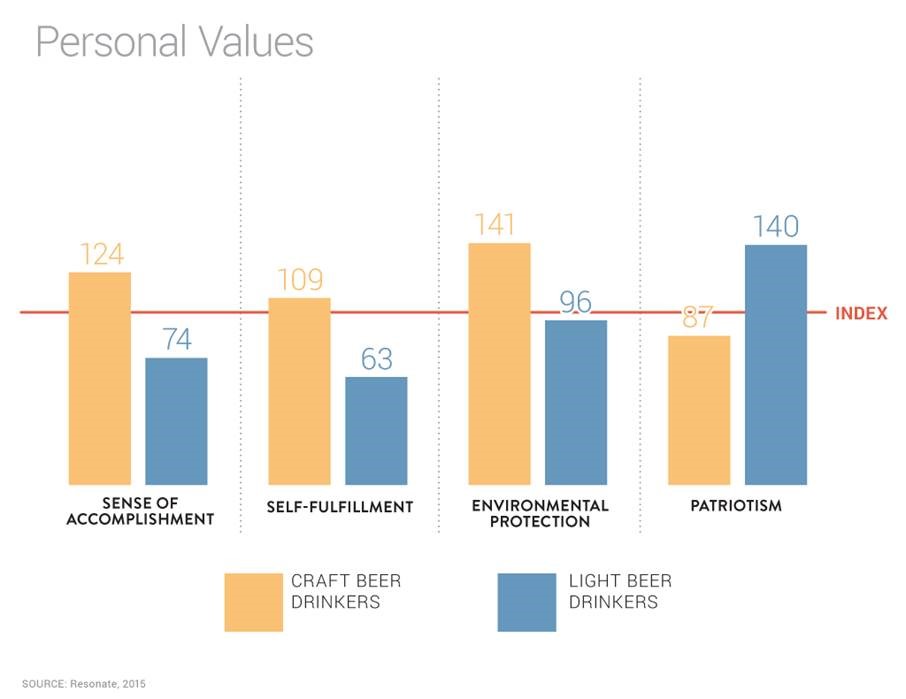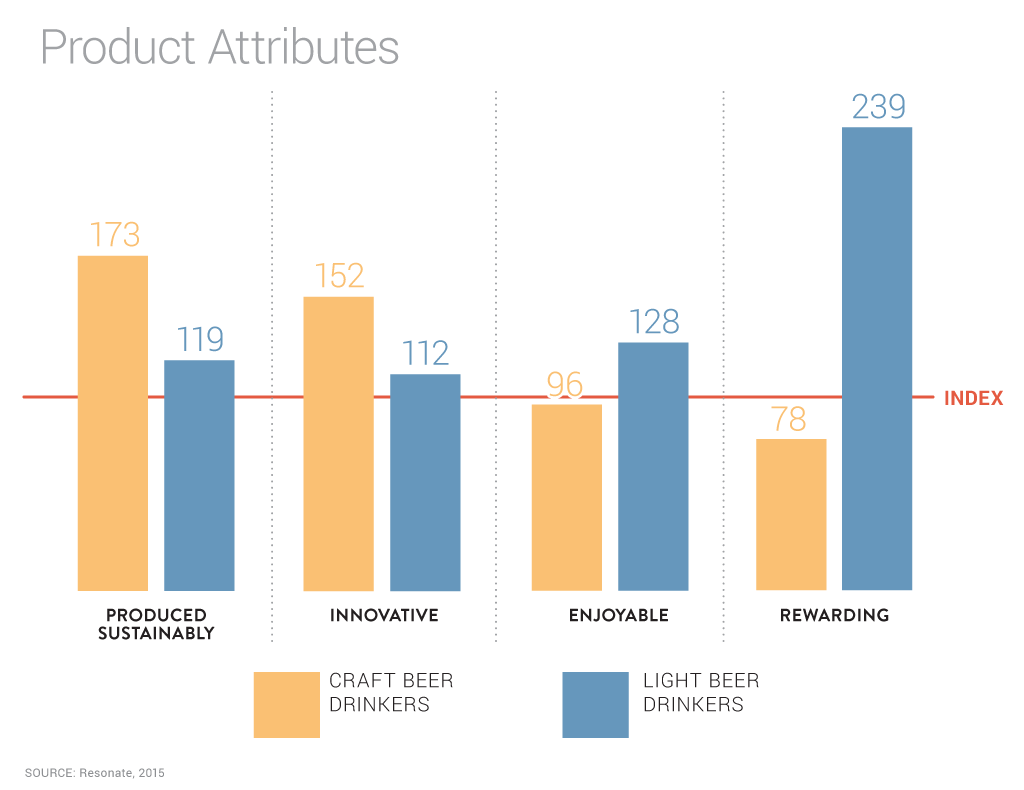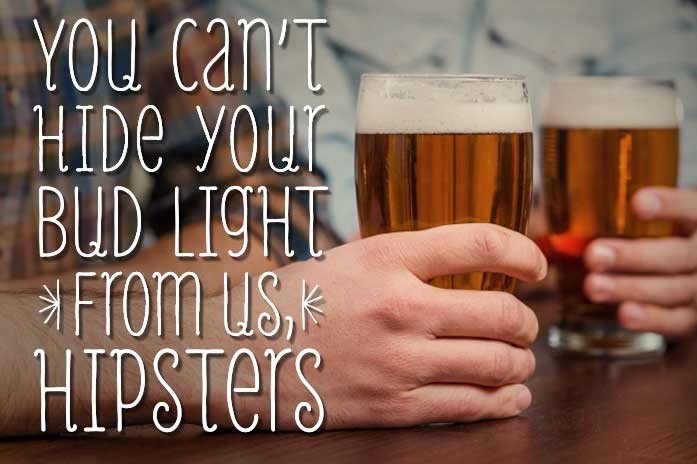News broke last week that brewing giant Anheuser-Busch InBev NV has reached a deal to take over rival brewer SABMiller PLC in a deal worth $104.2 billion. According to the Wall Street Journal, the deal would make AB InBev the world’s largest brewer, with an estimated 28.4 percent market share. The acquisition is intended to help solve the most pressing problem for these mega-brewers: declining beer sales in such mature markets as Brazil and the US.
In the US, sales from large brewers have been hammered also by the rise of craft brewers: those small-batch brewers of hoppy suds much favored by Millennials. Reading the news of this merger, we wondered: absent acquiring every craft brewer in the country, what can AB InBev do to reverse the decline of its signature Bud Light brand? Is it possible to design messages that appeal to the values and motivations of the craft beer crowd?
To answer these questions, Resonate looked at two audiences: the 26.2 million craft beer drinkers in the US, and the 14 million light beer drinkers (to build these audiences, we excluded those craft beer drinkers who also drank light beer in the previous 30 days, and vice versa). The first thing that jumped out at us was the demographic breaks:
- 22% of craft beer drinkers are 25 to 34
- The largest cohort of light beer drinkers are aged 45 to 54 -> 23%
- 23% of craft beer drinkers earn $100 to $150k
- The largest cohort of light beer drinkers earn $50 to $75k -> 26%
Contrary to conventional wisdom, Millennials don’t only drink craft beer—they are just as likely to drink light beer. The true split between these two audiences is in household income; craft beer drinkers are more likely to be affluent.
Here’s a look at the biggest index differences in personal values between the two groups:

There are distinct differences in the personal values of craft beer drinkers that AB InBev could exploit in marketing their products against craft brewers. Conversely, craft brewers might appeal to the patriotism of light beer drinkers by emphasizing their “made in America” quality.
Next, a look at the greatest index differences in product attributes:

The data reveals that while craft beer drinkers prefer innovative products and are willing to work to purchase the products they want, light beer drinkers prefer products that deliver instant gratification.
The good news for AB InBev: Contrary to popular belief, Millennials have not abandoned Bud Light. To counter-program against craft brewers, the company could position Bud Light as a brand that delivers a sense of personal identity and fulfilment—perhaps even shifting spend away from mass marketing to more targeted ads. Conversely, craft brewers can court light beer drinkers by emphasizing the fun, rewarding, and “everyperson” quality of their beer. Let the battle for the beer stein commence.
Categorized as: Blog Page


